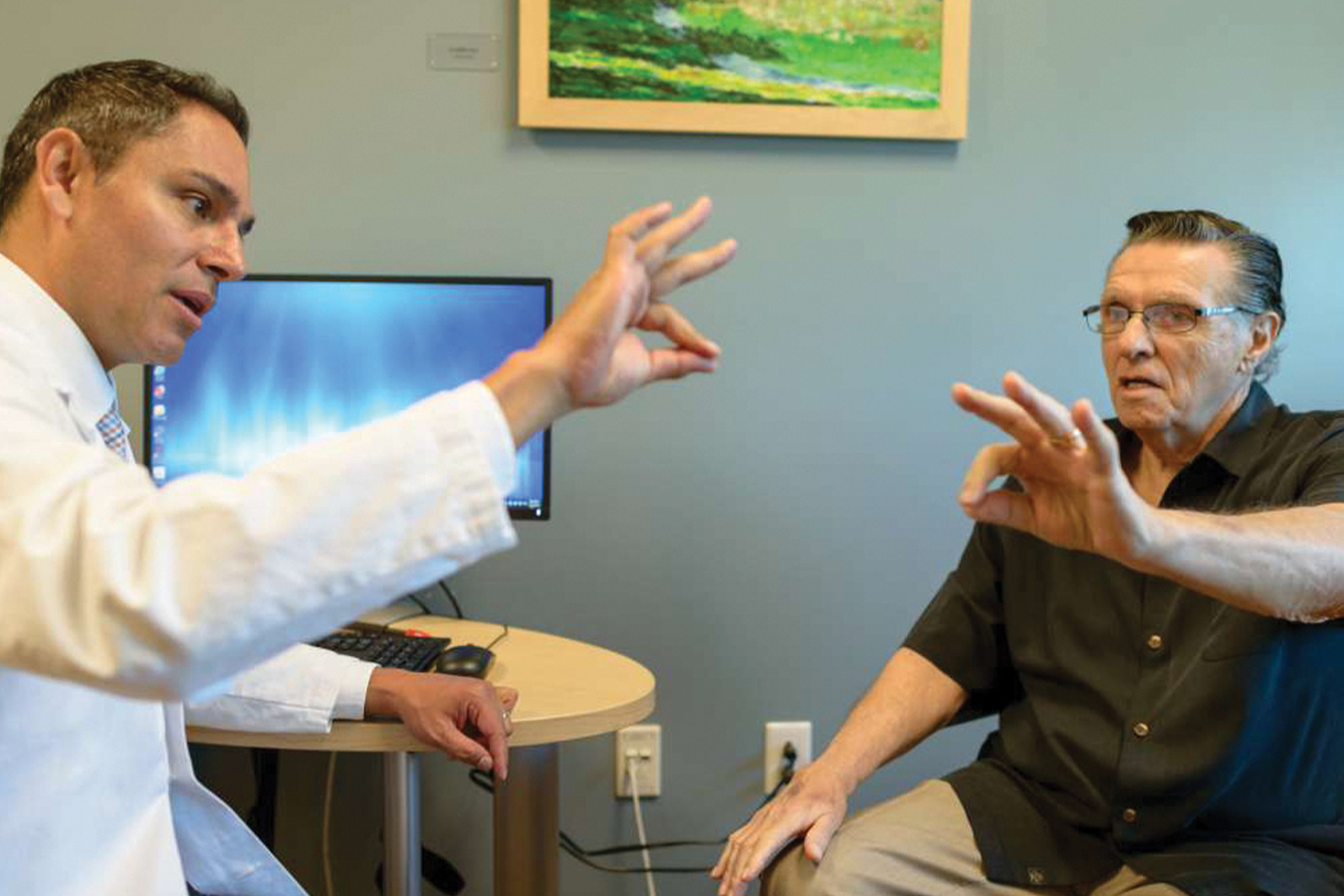An estimated 1 million Americans are living with Parkinson’s disease and Florida has the highest incidence per capita of any state, with nearly 80,000 patients.
But the University of Florida is also home to one of the leading Parkinson’s research programs in the country, with more than 100 faculty members focused on research and care.
From the Norman Fixel Institute for Neurological Diseases to the Center for Translational Research in Neurodegenerative Disease to the McKnight Brain Institute, scientists are working with patients to improve lives and learn ways to better treat, and one day cure, this devastating disease.
“
– Michael S. Okun, Director of the Fixel Institute and national medical advisor to the Parkinson’s Foundation.
We must rise to meet the growing challenges of neurodegenerative diseases, such as Parkinson’s. UF is the ideal place to do this and do it now.”

Established in 2019, the Fixel Institute is one of the nation’s most comprehensive and collaborative research centers. In partnership with UF Health, it connects more than 200 faculty members including neurologists, neurosurgeons, researchers, and more — all dedicated to clinical research and patient care for neurological disorders.
Although Parkinson’s is a well-known disease, it has many variations that sometimes make it difficult to diagnose, so UF researchers have developed new software that uses artificial intelligence to analyze MRI results and more quickly and effectively diagnose Parkinson’s and its related conditions.
“Although there is no substitute for the human element of diagnosis, even the most experienced physicians who specialize in movement disorder diagnoses can benefit from a tool to increase diagnostic efficacy between different disorders,” says David Vaillancourt, a professor of applied physiology and kinesiology in UF’s College of Health and Human Performance.
“One of the critical needs in the Parkinson’s field is to be able to accurately diagnose patients in the early stages, including differentiating between types of Parkinsonisms,” added Okun. “We will be able to use this marker to test new therapies stuck in the development pipeline.”

In another project, researchers are using AI to analyze videos of Parkinson’s patients performing finger-tapping and other movements that provide valuable information about how the disease is progressing and responding to treatments.
“Treatment centers often don’t have the time and personnel to analyze these videos, so we developed this software that can deliver useful results with just a few clicks,” says Diego Guarin, an assistant professor of applied physiology and kinesiology.
NSF Research Impact
Parkinson’s Disease
